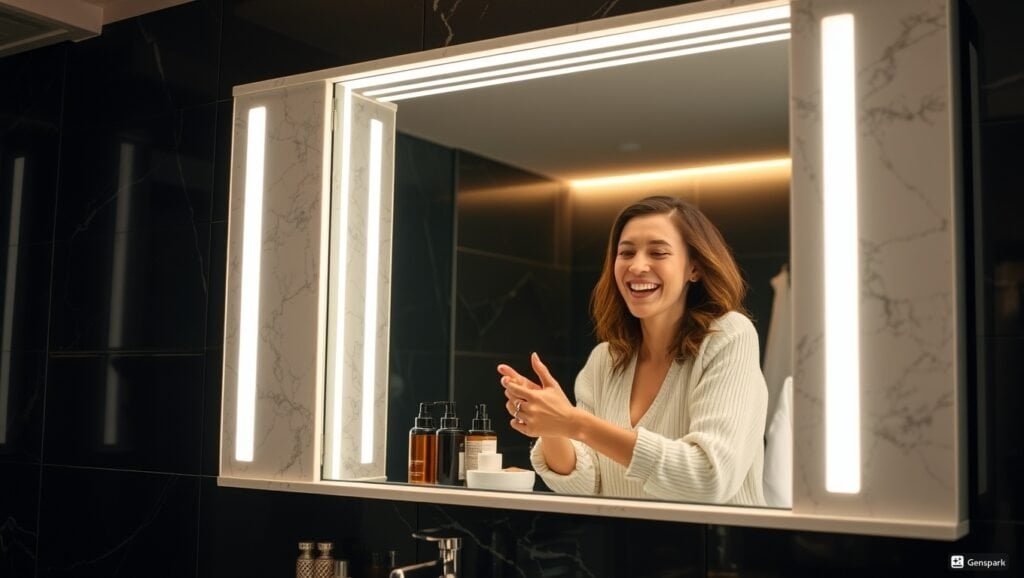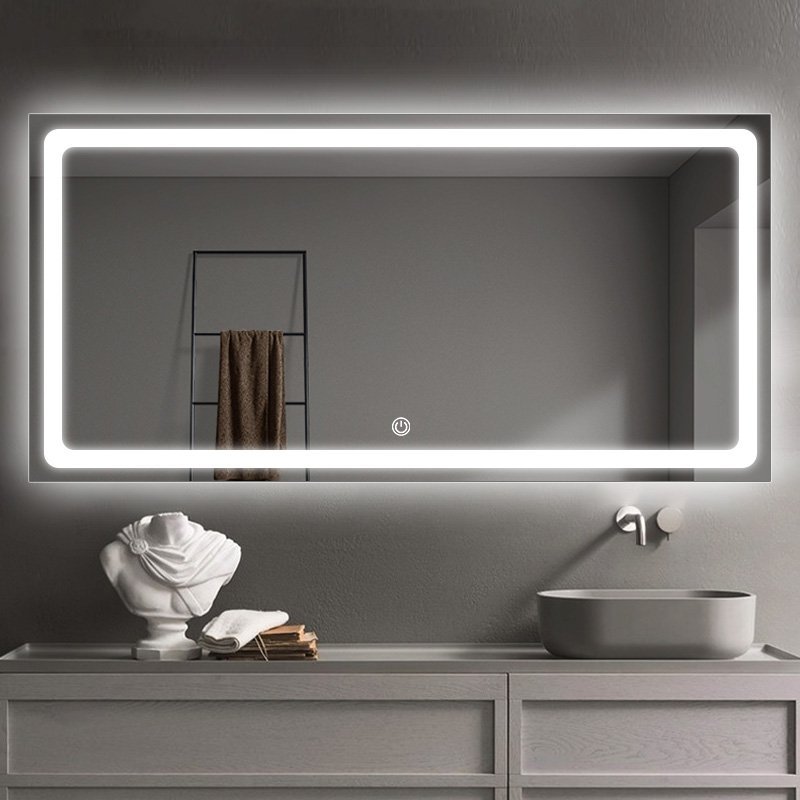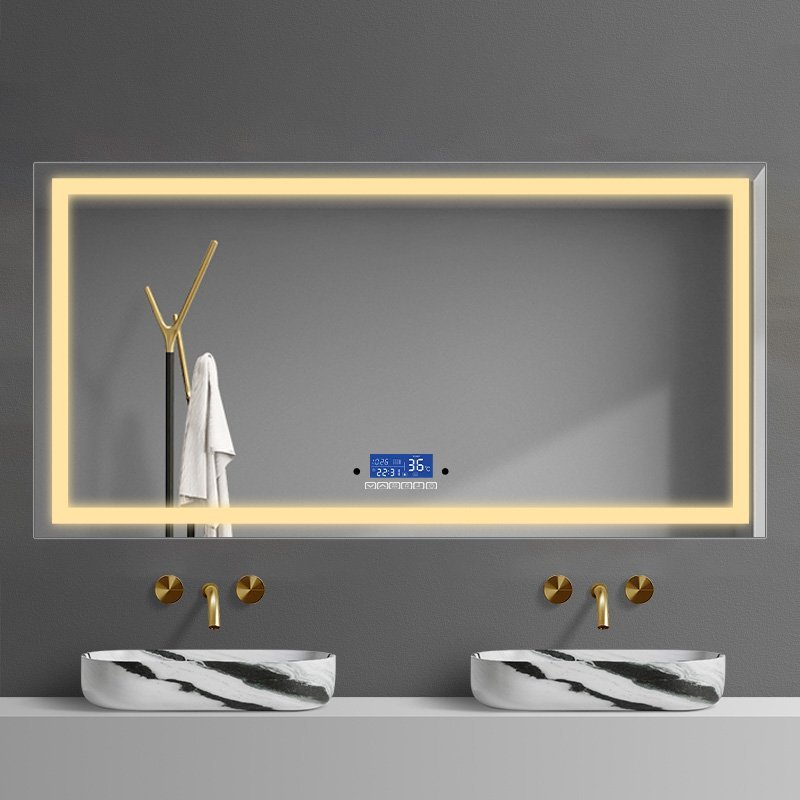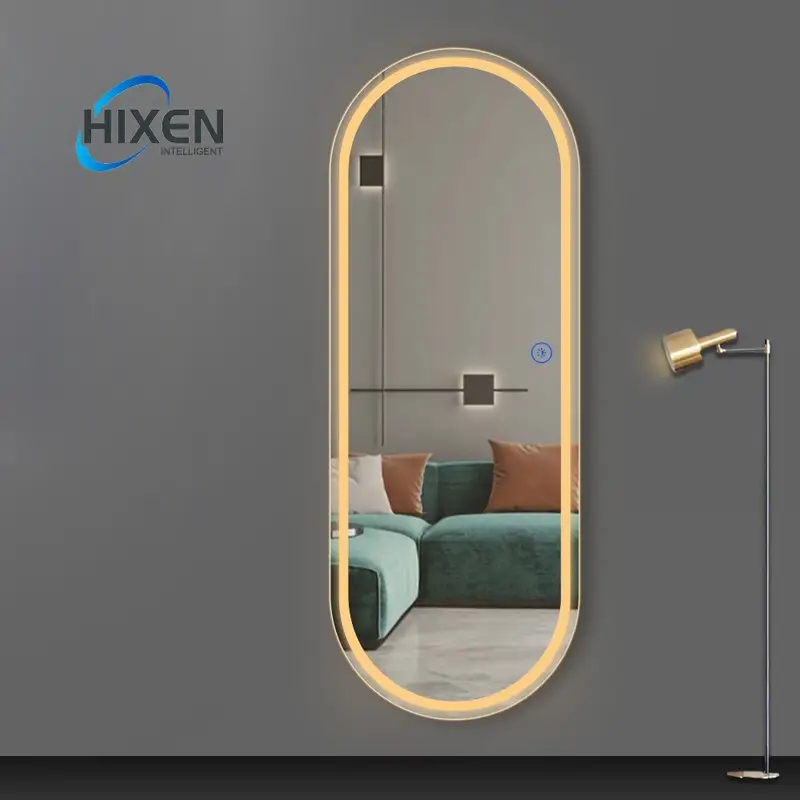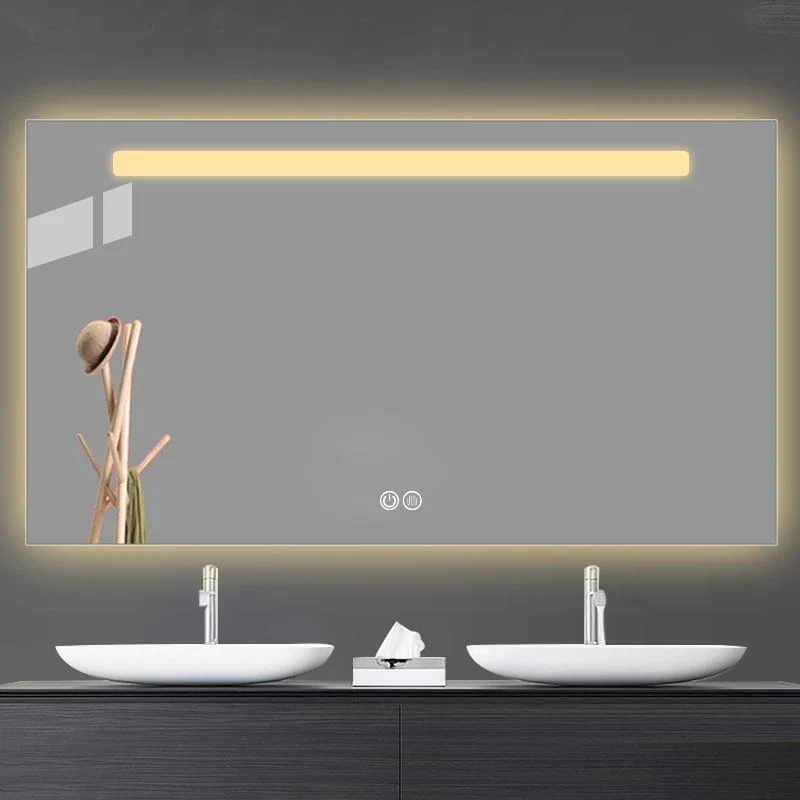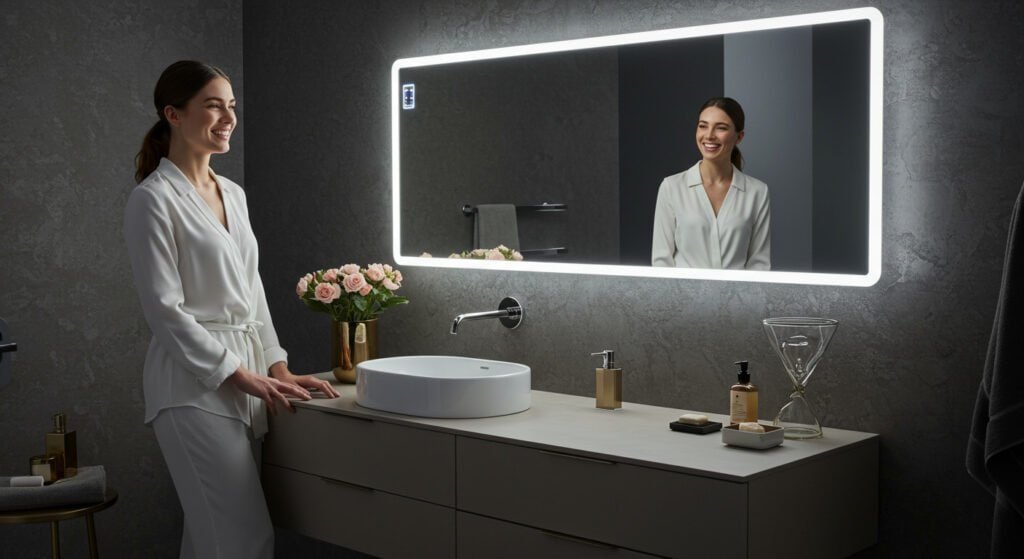|
گرفتن شما تثلیث صوتی بازیکن آماده ...
|
Do led mirrors need electricity? This confusion can lead to purchasing mistakes, installation complications, or even safety hazards. Choosing the right LED mirror with proper power understanding is essential for both functionality and safety.
بله, LED mirrors require electricity to function. They typically operate through three power methods: hardwired installation connected to your home’s electrical system, standard plug-in cords that connect to outlets, or battery-powered options for smaller portable mirrors.
Let’s explore the electrical aspects of LED mirrors to help you make informed decisions for your specific needs.
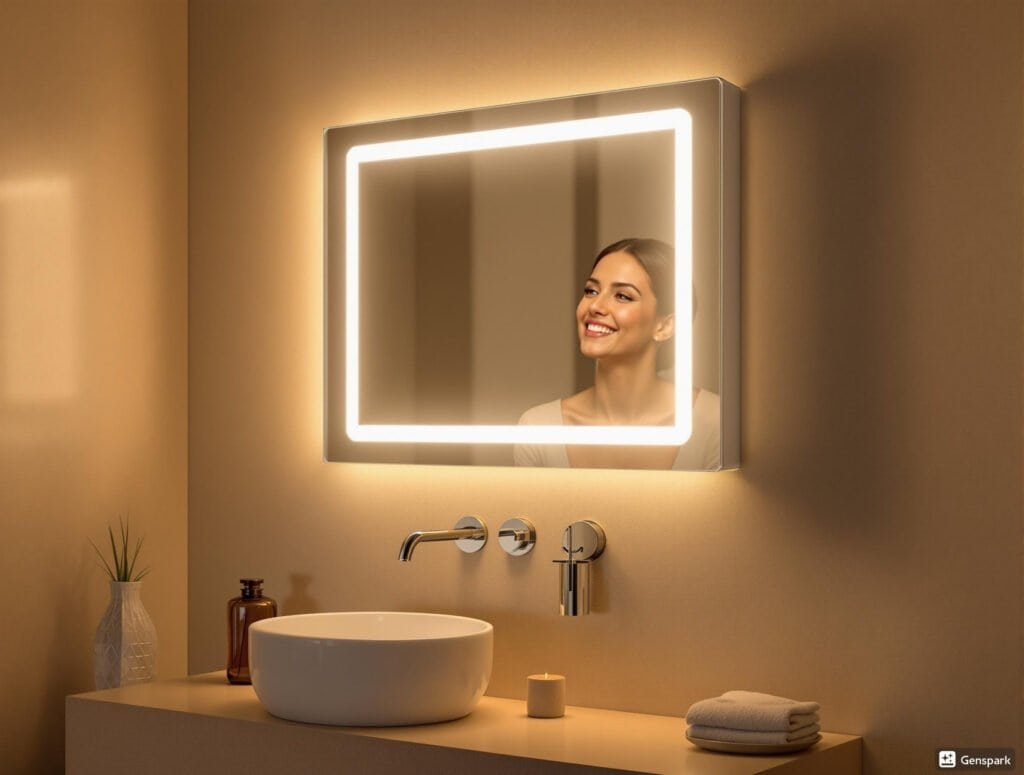
What Are LED Mirrors?
LED mirrors represent the evolution of traditional mirrors, combining reflective surfaces with integrated lighting technology for enhanced functionality and aesthetics.
An LED mirror is a specialized mirror that incorporates Light Emitting Diode technology around or behind the reflective surface to provide illumination. These mirrors integrate electrical components, including LED strips, control systems, and power connections.
Modern LED mirrors have transformed from simple reflective surfaces to multifunctional bathroom fixtures. LED bathroom mirrors represent the largest segment of this market, offering even light distribution without shadows, making them ideal for grooming tasks.
Vanity mirrors with LED lighting have become essential in makeup application areas, while full-length LED mirrors provide comprehensive visibility for dressing. The integration of technology has expanded to include features such as anti-fog systems, بلندگوهای بلوتوث, digital clocks, and touch sensors, all requiring electrical components to be seamlessly incorporated into the mirror’s design while maintaining safety standards.
How Do LED Mirrors Work?
Understanding the operational mechanics of LED mirrors helps in appreciating their energy needs and installation requirements.
LED mirrors work by passing electricity through semiconductor materials that emit light when activated. The control circuits regulate power flow to the LEDs, allowing for functions like dimming, color temperature adjustment, and synchronization with other smart devices.
The illumination system in an LED mirror typically consists of strategically placed LED strips that provide balanced, shadow-free lighting. Most modern LED bathroom mirrors incorporate sophisticated circuitry that enables multiple functions through a single interface, often a touch sensor on the mirror’s surface.
The mirror’s internal wiring connects all electrical components to a central connection point where power enters the unit. This design allows for various control mechanisms, from simple on/off switches to sophisticated systems that remember user preferences or respond to voice commands. The entire electrical system is sealed and isolated from moisture exposure, particularly important for bathroom mirror installations where water contact is likely.
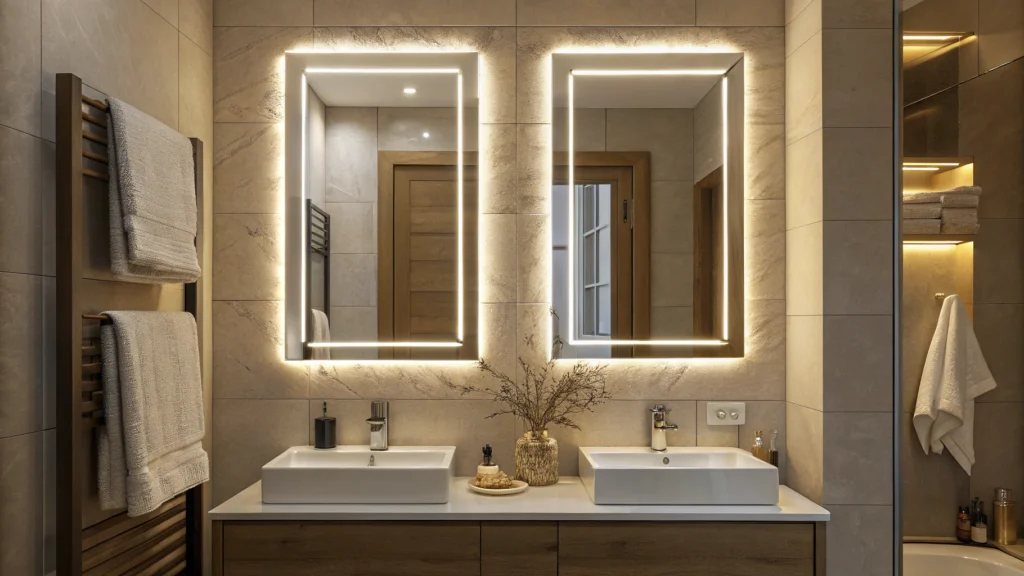
Why Are LED Mirrors Popular?
The rising popularity of LED mirrors stems from their perfect balance of functionality, aesthetics, and energy efficiency in modern interior design.
LED mirrors have become increasingly popular due to their superior lighting quality, energy efficiency, and integration of smart features. Their ability to provide natural-looking illumination while consuming minimal electricity makes them an attractive choice for contemporary homes.
The market for LED mirrors, particularly LED bathroom mirrors, has experienced significant growth as consumers increasingly prioritize both form and function in their living spaces. Unlike traditional bathroom fixtures with separate mirrors and lighting, LED mirrors combine these elements seamlessly, creating a more streamlined aesthetic that appeals to minimalist design sensibilities.
The hospitality industry has been particularly influential in popularizing these fixtures, as hotels often showcase cutting-edge bathroom designs that consumers then want to replicate in their own homes. علاوه بر, as smart home technology becomes more mainstream, consumers are drawn to the integration capabilities of advanced LED mirrors that can connect with other household systems. This combination of practical benefits and design appeal has established LED mirrors as standard fixtures in modern bathroom renovations.
Benefits of LED Mirrors
LED mirrors offer numerous advantages that justify their electrical requirements and make them worth the investment for most consumers.
LED mirrors provide superior illumination quality, energy efficiency, and enhanced functionality through features like defoggers, اتصال بلوتوث, and touch controls. Their longevity and even light distribution make them practical investments despite requiring electrical connections.
The primary advantage of LED bathroom mirrors lies in their lighting quality, which closely mimics natural daylight and provides shadow-free illumination critical for tasks like shaving or applying makeup. The energy efficiency of LED technology means these mirrors typically use 80% less electricity than traditional incandescent-lit alternatives, resulting in significant long-term cost savings despite higher initial investment.
Advanced models offer customizable lighting with adjustable color temperatures, allowing users to switch between warm and cool lighting based on time of day or specific needs. The integrated design eliminates the need for separate wall sconces or overhead lighting fixtures, creating a cleaner aesthetic and often saving valuable space in compact bathrooms. علاوه بر, many LED mirrors include built-in defoggers that prevent steam buildup—a practical feature that extends their functionality in bathroom environments without requiring additional electrical fixtures.
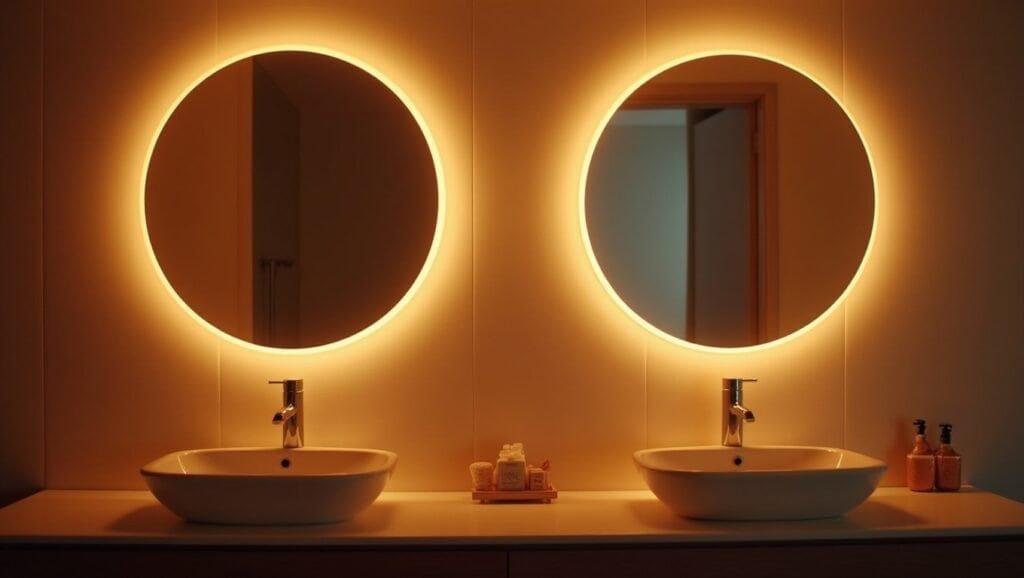
How Do LED Mirrors Get Power?
The method of powering LED mirrors directly impacts installation requirements, placement options, and user experience.
LED mirrors can receive power through direct hardwiring to electrical circuits, plug-in connections to standard outlets, or battery power for portable options. Each power delivery method offers different advantages in terms of installation permanence, aesthetic appearance, and placement flexibility.
Hardwired LED mirrors connect directly to your home’s electrical system, typically requiring professional installation but providing the cleanest appearance with no visible cords. This method is preferred for permanent installations in primary bathrooms where the mirror serves as a focal point. Plug-in LED mirrors offer greater installation flexibility, requiring only a nearby electrical outlet, making them suitable for rentals or situations where permanent modifications aren’t possible. These mirrors typically come with cords ranging from 4-6 پا, allowing for reasonable placement options in relation to existing outlets.
Battery-powered LED mirrors represent the most flexible option, operating completely independently from household electrical systems. While traditionally limited to smaller vanity mirrors, technological advancements have made battery powered LED bathroom mirrors increasingly viable for full-sized applications, though with limited operation time between charges compared to their wired counterparts.
آیا آینه های LED باید وصل شوند?
Understanding whether LED mirrors require direct electrical connections helps determine the appropriate type for your specific installation scenario.
Not all LED mirrors need to be plugged into outlets. While plug-in LED mirrors are common, alternatives include hardwired installations that connect directly to your home’s electrical system and battery-powered options that function without any external power connection.
The decision between a plug-in LED mirror and alternatives depends largely on your installation circumstances and personal preferences. Plug-in models offer a balance between permanence and flexibility, requiring minimal installation expertise while providing full functionality. They do, however, necessitate proximity to an electrical outlet and present the aesthetic challenge of cord management.
Battery powered LED mirrors eliminate these concerns entirely, offering complete placement freedom and cord-free operation. These are particularly advantageous in rental properties where modifications are limited or in spaces where electrical access is problematic. هر چند, battery life limitations mean these mirrors typically provide 2-8 hours of illumination between charges, making them less practical for primary bathroom installations with frequent daily use. For permanent, high-use installations where aesthetics are paramount, hardwired LED mirrors represent the optimal solution despite requiring professional installation.

How Much Electricity Do LED Mirrors Consume?
Energy consumption considerations are important for both environmental impact and operating costs when selecting an LED mirror.
LED mirrors are highly energy-efficient, typically consuming between 20-50 watts depending on size, brightness level, and additional features. This makes them approximately 80% more efficient than traditional incandescent-lit mirrors while providing superior brightness and clarity.
The power consumption varies significantly based on the mirror’s features. Basic LED-illuminated mirrors use minimal electricity, while models with additional functionalities like defoggers, بلندگوهای بلوتوث, digital clocks, or touch sensors require more power.
Most manufacturers list the wattage specifications on product descriptions or packaging, allowing you to calculate potential energy costs. به عنوان مثال, a 30-watt LED mirror operating 2 hours daily would consume approximately 1.8 kWh per month – a minimal addition to your utility bill compared to traditional lighting solutions. The energy efficiency of LED technology means that even mirrors with multiple functions typically consume less electricity than older lighting technologies, making them environmentally responsible choices despite requiring electrical connections.
Can LED Mirrors Be Hardwired?
بله, many LED mirrors can be hardwired directly to your home’s electrical system. Hardwired LED mirror installations provide a clean, cord-free appearance and permanent power connection, though they typically require professional installation by a qualified electrician.
The hardwiring process involves connecting the mirror’s internal wiring directly to the household electrical circuit, usually through junction boxes positioned behind the mirror. This creates a seamless, built-in appearance that enhances the bathroom’s aesthetic by eliminating visible power cords. Most hardwired LED mirrors operate on standard residential voltage (110-240V) and can be connected to existing lighting circuits or dedicated lines depending on their power requirements.
The installation typically requires cutting into drywall to access or install electrical boxes, making this method more suitable for new construction or major renovations. Hardwired installations also allow for integration with bathroom lighting controls, enabling the mirror to be operated from standard wall switches alongside other lighting fixtures. While this installation method involves higher initial costs, it provides significant aesthetic advantages and may increase property value through its premium, permanent nature.

How Long Do LED Mirrors Last?
The longevity of LED mirrors directly relates to their value proposition and environmental impact as bathroom fixtures.
LED mirrors typically last 30,000 به 50,000 hours of use, which translates to approximately 20+ years of normal bathroom usage. This exceptional lifespan makes them long-term investments despite their electrical requirements and higher initial cost.
The durability of LED technology significantly exceeds traditional lighting options, with quality LEDs maintaining approximately 70% of their original brightness even after decades of use. This extended lifespan reduces the environmental impact associated with replacement and disposal of lighting fixtures. The most common failure point in LED mirrors is not the LED lights themselves but rather the drivers or control components that regulate power flow.
Quality manufacturers typically offer warranties ranging from 2-5 سال, with premium products extending coverage to 10 years or more. To maximize lifespan, users should avoid frequent on/off cycling in short periods and ensure proper ventilation around the mirror’s electrical components. Regular gentle cleaning with appropriate non-abrasive products also helps maintain both the reflective surface and the LED functionality, ensuring the mirror remains an effective and efficient bathroom fixture throughout its extended lifespan.
Can LED Mirrors Be Used in Bathrooms?
Safety considerations around electricity and moisture make bathroom compatibility a critical concern for LED mirror installations.
LED mirrors can be safely used in bathrooms when they have appropriate IP (Ingress Protection) ratings. Most LED bathroom mirrors are specifically designed with IP44 or higher ratings, making them resistant to water splashes and moisture exposure common in bathroom environments.
The bathroom presents unique challenges for electrical fixtures due to high humidity and direct water exposure. Quality LED bathroom mirrors address these concerns through specialized construction techniques including sealed edges, moisture-resistant backing materials, and protected electrical components.
The International Protection Marking system provides a standardized way to evaluate a mirror’s suitability for bathroom installation, with the first digit indicating dust protection and the second indicating water resistance. For bathroom applications, an IP44 rating (protected against solid objects over 1mm and water splashed from all directions) represents the minimum acceptable standard, while premium mirrors often feature IP65 ratings for enhanced protection.
Most hardwired LED mirrors include appropriate safety features for bathroom installation, but consumers should verify that plug-in models are explicitly rated for bathroom use before installation. Additional safety features like GFCI (Ground Fault Circuit Interrupter) protection—either built into the mirror or provided by the bathroom’s electrical circuit—offer further protection against electrical hazards in moisture-rich environments.

پایان
LED mirrors do require electricity to function, but offer flexible power options including hardwired, plug-in, and battery-powered solutions to suit various installation scenarios and user preferences.
- برای یادگیری نحوه انتخاب آینه حمام مناسب اینجا را کلیک کنید.
- برای یادگیری نحوه نصب آینه اینجا را انتخاب کنید.
- برای یادگیری نحوه انتخاب آینه اندازه مناسب اینجا را کلیک کنید.
- برای یادگیری نحوه ساخت آینه ها اینجا کلیک کنید.
- اینجا را کلیک کنید و یاد خواهید گرفت که چرا در آینه ها بهتر به نظر می رسیم.
- اینجا را کلیک کنید در مورد بالا خواهید آموخت 10 تولید کنندگان آینه LED برای 2024.
- اینجا را کلیک کنید تا دریابید که چرا نور آینه غرور من روشن نمی شود?
- دریابید که آینه حمام چقدر باید قد داشته باشد?اینجا را کلیک کنید
- اگر نمی دانید چگونه آینه خود را تمیز کنید اینجا را کلیک کنید
- برای اطلاع از نحوه رفع آینه سنسور لمسی که کار نمی کند اینجا را کلیک کنید

